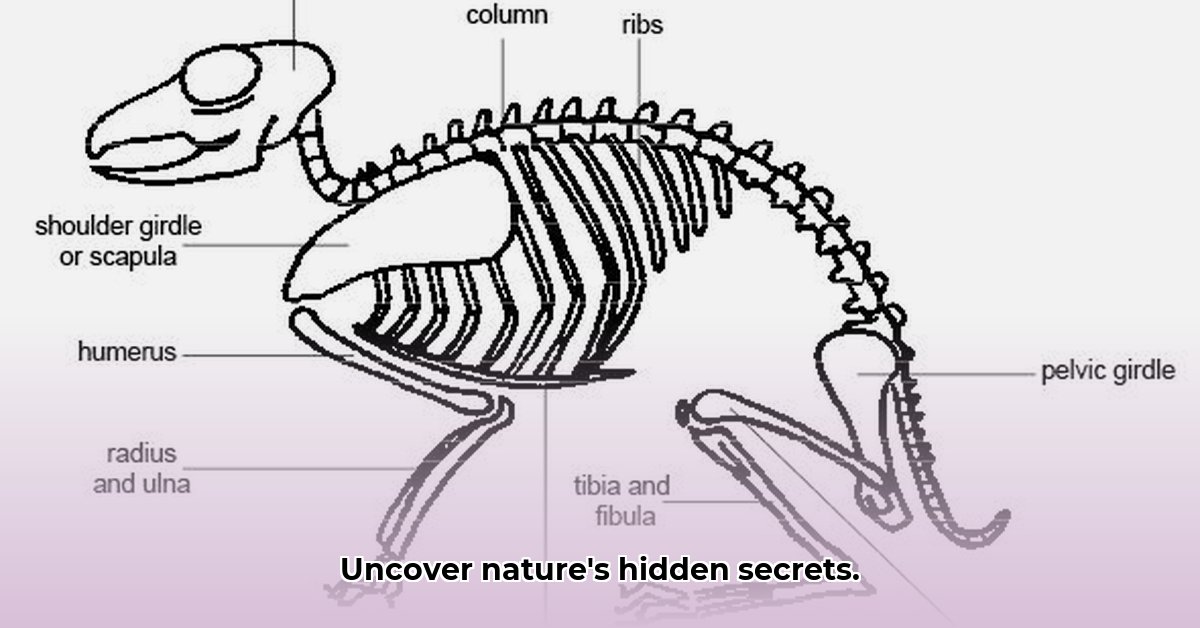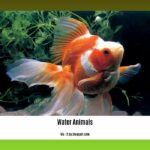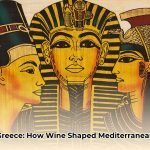Ever wonder what’s going on inside a jellyfish, a beetle, or a lion? It’s all about their skeletons! But “skeleton” isn’t just about the bones you might think of. Some animals have skeletons made of water, others have hard shells outside their bodies, and some, like us, have bones on the inside. This guide explores the amazing variety of animal skeletons, from the simple to the surprisingly complex. We’ll compare and contrast different types, explaining how they work and why they evolved the way they did. Get ready to dive into the biomechanics of movement, from the gentle sway of a starfish to the powerful jump of a kangaroo. We’ll make it easy to understand, whether you’re a biology buff or just curious about the natural world. For more examples, check out these [animal patterns](https://www.lolaapp.com/animal-patterns/).
Animal Skeletons: A Deep Dive into Nature’s Amazing Frameworks
Let’s talk skeletons and their structural support! When you picture a skeleton, you probably think of a human one – a familiar arrangement of bones. But the animal kingdom boasts a stunning array of skeletal structures, each a testament to millions of years of evolution. Imagine the intricate web of a dragonfly’s wings, the tough shell protecting a tortoise, or the sinuous spine of a snake. These all serve the same basic purpose: holding the body together, offering protection, and enabling movement. Their diversity is breathtaking, reflecting the incredible variety of lifestyles and environments animals inhabit. What fundamental roles do these diverse skeletal structures play in the animal kingdom? From support and protection to enabling complex movements and facilitating sensory functions, skeletons are essential for survival.
The Amazing Variety of Support Systems: Hydrostatic Skeletons, Exoskeletons, and Endoskeletons
Animals support themselves in surprisingly different ways. We can broadly group their support structures into three main categories: hydrostatic skeletons, exoskeletons, and endoskeletons.
First, there are hydrostatic skeletons. Think of squishy creatures like jellyfish and earthworms. They don’t have hard bones; instead, they rely on internal water pressure to maintain their shape and move. Picture a water balloon – the water inside is what gives it form and lets it bend. Muscles surrounding the fluid-filled cavity, known as the coelom, contract to change its shape, enabling movement. It’s a simple but effective system for smaller, softer animals, well-suited for burrowing or swimming with energy-efficient movement. These skeletons function best in aquatic environments, providing support against gravity.
Next, we have exoskeletons. These are the tough, external shells found on many invertebrates. Think of the hard outer covering of a beetle or a crab. Like a knight’s suit of armor, it protects the creature from predators and physical damage. But there’s a catch: exoskeletons don’t grow with the animal, so creatures with exoskeletons must shed their old shell (molt) and grow a new, larger one periodically. This process makes them vulnerable until their new shell hardens, highlighting a critical trade-off between protection and growth. The materials of exoskeletons also vary greatly; the hard, calcium carbonate casing of a crab is different from the chitinous shell of an insect. Chitin, a polysaccharide derivative of glucose, provides strength and flexibility.
Finally, there are endoskeletons – the internal frameworks of vertebrates like us. Our bones provide the structural support from the inside out. But endoskeletons aren’t just about bones; cartilage, that flexible connective tissue, plays a vital role. It cushions joints, allowing for smooth movement, and provides structure in areas like the nose and ears. The balance of bone and cartilage differs widely depending on the animal – think of the lightweight, hollow bones of a hummingbird versus the dense bones of a hippopotamus! Each design reflects unique needs and adaptations. These internal skeletons allow for substantial growth and complex movements, unlike exoskeletons.
Endoskeletons: A Closer Look at Bones and Cartilage for Growth Support
Endoskeletons offer an amazing range of adaptations. Compare the hollow, lightweight bones of a bird perfectly suited for flight with the dense, heavy bones of a whale built to withstand the immense pressure of deep ocean dives. These adaptations showcase the power of natural selection – how animals evolve to thrive in their environments. Cartilage reinforces joints, reduces friction, and supports flexible structures. Bones are composed of living tissues, constantly remodeling and repairing themselves. How do these skeletal adaptations reflect the diverse environments animals inhabit? Terrestrial animals have robust limb bones for weight-bearing, while aquatic animals may have modified fins or flippers supported by the endoskeleton.
Bones are primarily composed of calcium phosphate and other minerals, giving them strength and rigidity. Specialized cells called osteoblasts build new bone tissue, while osteoclasts break down old or damaged bone. Cartilage, often found in joints, is made of chondrocytes embedded in a matrix of collagen and other proteins, providing flexibility and acting as a shock absorber. The proportion of bone to cartilage varies considerably depending on the animal and its movement patterns. A cheetah needs very flexible joints for speed, whereas a tortoise, needing strength and protection, has a higher proportion of bone.
Exoskeletons: The Challenges of a Hard Shell and Chitinous Structures
Animals with exoskeletons face a significant hurdle: growth. Their rigid external shell doesn’t expand, necessitating the molting process (ecdysis). This periodic shedding and regrowth of the exoskeleton, while essential, renders the animal vulnerable until the new shell hardens. The materials themselves can vary significantly: insects generally have hard, chitinous exoskeletons, while mollusks often sport calcium carbonate shells. These differences impact the strength, weight, and flexibility of the exoskeleton. The addition of calcium carbonate, as seen in crustaceans, provides extra hardness but also increases weight. Would you say that the vulnerability during molting is a significant evolutionary trade-off for exoskeleton-bearing animals? Yes, but the protection and support offered by the exoskeleton outweigh the risks for many species.
Comparing Support Systems: Advantages and Disadvantages such as Molting Process
Let’s compare the three main skeletal types to understand their relative strengths and weaknesses.
| Skeletal Type | Advantages | Disadvantages |
|---|---|---|
| Hydrostatic | Flexible, simple structure, energy-efficient, ideal for aquatic environments and burrowing animals | Limited protection, weak support for larger sizes, not suitable for terrestrial animals requiring strong weight support |
| Exoskeleton | Strong protection, good support, provides leverage for muscles | Restricts growth, requires molting (vulnerable period), heavy relative to size, limits body size |
| Endoskeleton | Allows for growth, supports large body sizes, flexible, adaptable to various environments and movement styles | Prone to fractures, requires repair and maintenance, can be energy-costly to develop and maintain |
The Ever-Evolving Story of Animal Skeletons and Microscopic Bone Structure
The study of animal skeletons is far from over. Scientists continually uncover new insights into their evolution, the mechanics of how they function, and their amazing adaptations. Research into bone structure at a microscopic level is revealing new details about how bones grow, repair, and respond to stress. Techniques like micro-CT scanning and advanced microscopy allow researchers to visualize bone architecture in 3D. At a larger scale, scientists are learning more about how skeletal structures relate to the animal’s lifestyle and environment through biomechanical modeling and comparative anatomy. The study of animal skeletons isn’t just about bones – it gives us a deeper understanding of evolution and adaptation to the environment. There’s still so much more to discover! What future discoveries might reshape our understanding of animal skeletons? Discoveries in biomaterials, regenerative medicine, and evolutionary developmental biology could provide new insights into animal skeletons.
Comparing Metabolic Costs of Locomotion in Bony vs Cartilaginous Fish
Key Takeaways:
- Body size significantly influences locomotion energy costs, with smaller animals expending proportionally more energy.
- While existing models predict locomotion costs reasonably well, they often underestimate actual values, especially when comparing diverse species.
- Factors beyond body size and limb morphology, such as muscle fiber type, gait, and habitat, significantly impact energy use.
- Comparing metabolic costs of locomotion in bony vs cartilaginous fish reveals interesting differences due to skeletal structure and swimming style.
- Further research is needed to develop more comprehensive models that accurately predict metabolic costs across various species, including refined estimations for comparing metabolic costs of locomotion in bony vs cartilaginous fish.
The Unexpected Variability in Animal Locomotion and Energy Expenditure
Think about how effortlessly a cheetah sprints – a marvel of efficiency. Now contrast that with a lumbering sloth. Why such a drastic difference in the energy spent moving? It’s not just about body size. While bigger animals generally use less energy per unit of weight, there’s still huge variation among species of similar size. Scientists have developed models to predict these energy costs, but they often fall short. This gap highlights the complexity of animal locomotion and the need for better, more nuanced models. The models often fail to fully capture the complexity of the animals anatomy. What factors, beyond size, contribute to the variable energy expenditure in animal locomotion? Factors such as muscle fiber composition, gaits employed during movement, and environmental conditions contribute.
Skeletal Structure’s Role in Movement Efficiency and Ossified Skeletons
The skeleton—be it bone or cartilage—plays a critical role. Let’s dive into the fascinating comparison of comparing metabolic costs of locomotion in bony vs cartilaginous fish. Bony fish
















